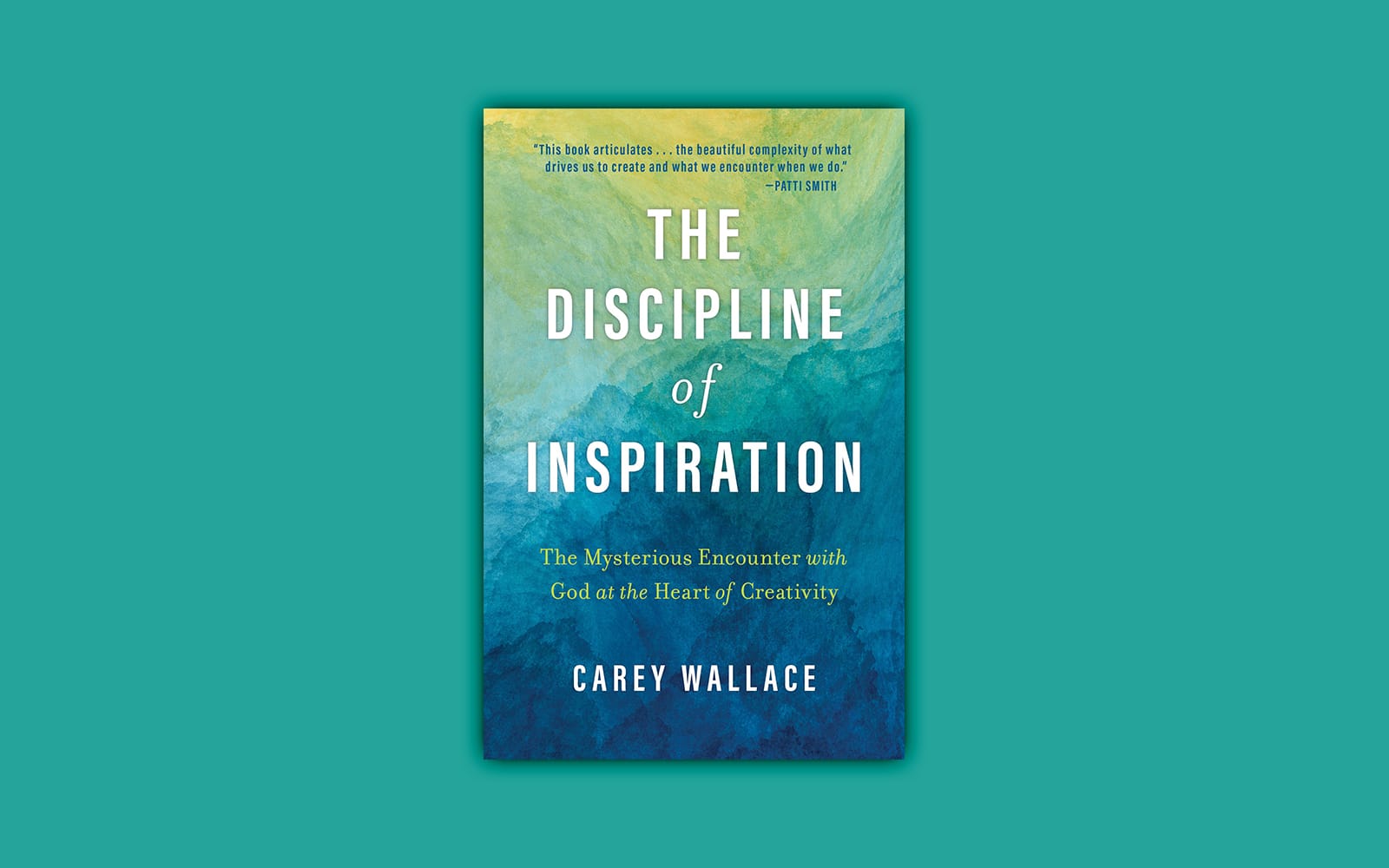“Inspiration” is a loaded term. A sight, a memory, or another person may serve as a muse—as inspiration—to artists or creative figures, perhaps prompting them to create objects or products of great beauty (or at least that their creators think of as beautiful). But many conservative or evangelical thinkers may be hesitant to use the term in this way. For them, “inspiration” has a more technical meaning, one they associate primarily—if not exclusively—with the Bible. They will quickly invoke 2 Timothy 3:16, “All Scripture is God-breathed” (NIV), noting that “θεόπνευστος” here can be translated as “inspired by God.” In this context, these Christians may feel that it is dangerous, if not downright blasphemous, to apply the language of inspiration to any human product outside the Bible itself. Yet for millennia, artists have insisted on using just such “inspirational” language in regard to their own works.
Wallace’s evidence for her various claims . . . consists almost entirely of personal experience and anecdotes or quotes from artists.
One of the latest treatments of this subject in the Christian cultural ecosphere is Carey Wallace’s book The Discipline of Inspiration: The Mysterious Encounter with God at the Heart of Creativity. Wallace is a well-established writer and speaker, with a history of trying to help cultivate creative work in others (a history to which she alludes in her book). It is unsurprising, then, that she would be so interested in questions of what constitutes inspiration in the creative process. Her meditations are based in experience as a practitioner and an observer of the process, across her career. As such, she presents various insights scattered like seeds throughout the book, though perhaps not as many sustained analyses as one might hope.
The Discipline of Inspiration is a bit of a dance. Often relying on one- to two-sentence paragraphs in three- to five-page chapters, its prose doesn’t sit still for very long. Wallace’s approach is aphoristic and declamatory, stepping back and forth with little truisms or koans. Since an admirable interest in preserving the mysterious or apophatic nature of creativity appears to be a key interest of hers, she often dances around definitions too. Early on, she asks the question, “But what does inspiration actually mean?” (3). Without directly answering, she does connect it to human creation and to art, of which she asserts,
All art comes from God.
This is art’s only source, and its only definition. (14)
One of her early chapters is titled, “Not Everything Is Art,” but one of the book’s final chapters bears the title, “Everyone Is an Artist, Everything Is Art.” This later chapter is focused on a sort of democratizing of our notions of art: art can exist outside the traditional media associated with the term, and because everyone can experience her broad sense of inspiration, everyone can produce “art” within their respective domains. As she articulates within that chapter (emphasis mine):
Inspiration is present in all lives.
Anyone who surrenders to it can be an artist.
And anything in the world can be art. (185)
This accounts for the seeming contradiction in her questions about art. It is not that every human production is necessarily artistic—she calls out “propaganda, pornography, and entertainment” as examples of inartistic modes, but even here, she admits, “Almost none of these categories . . . ever appear unalloyed” (31).
Wallace is at great pains to note that inspired art is not reducible to technique, though, to her credit, she includes a chapter called “Incarnation and Technique” which acknowledges that “without technique, even moments of great inspiration will not result in art” (110). Her book, after all, is not just about “inspiration” but also “discipline,” including “the discipline to develop technique, and the discipline to create” (110).
Ironically, the book as a whole does not strike me as the most disciplined. To be sure, it has a broad overall structure, and each individual chapter does make a point. But these points aren’t generally argued so much as they are asserted. Wallace’s evidence for her various claims (when evidence is presented) consists almost entirely of personal experience and anecdotes or quotes from artists (from across time but with a definite leaning toward twentieth- and twenty-first century writers, singers, and filmmakers). Indeed, in some senses the book’s content itself appears to have been established by design as a vessel in which to offer those quotes: “I did a deep dive into all the direct speech I could find by artists on art” (9).
Wallace certainly seems to be aiming at general readers, albeit ones who are open to religious interpretations.
The problem with this approach is that, by her own admission, artists talking about their art often disagree, or at least approach it from wildly different perspectives (“when artists do talk about art, nobody agrees on anything” [10]), and often do so in unflattering ways (“a demoralizingly large amount of what artists have to say about art was simply gossip and backbiting” [9]). It is hardly clear that artists are themselves the best analysts of their own processes, especially when speaking or writing off the cuff. (Many of Wallace’s quotations come from interviews, conversations, or letters.)
And if this is true broadly, then it is even truer if one is trying to understand artistic inspiration as a Christian. Wallace hardly restricts herself to religious artists, and so she must contend with statements about creativity from people whose thoughts are not framed theologically. If the biblical account of the cosmos and its meaning is accurate, then non-Christians’ understandings of their own creative work must necessarily be incomplete. That doesn’t mean they may not have potentially helpful insights, but such insights must be fragmented without a grounding in a right metaphysics.
To accommodate this disparate witness from such a variety of artists, The Discipline of Inspiration ends up avoiding much theological meat. Eerdmans is an established Christian-based publishing company, but it allows its authors some latitude in how explicit its books are in their Christianity, as its site notes:
Deeply rooted in the historic Christian tradition, ecumenical in spirit, and open to emerging dialogue between denominations and with other faiths, Eerdmans is committed to the life of the religious academy, to the church, and to the role of religion in culture, while continually diversifying its body of work so as to reach an even wider audience of academics, faith leaders, and general readers.
Wallace certainly seems to be aiming at general readers, albeit ones who are open to religious interpretations. “God” is certainly at the heart of her understanding of creative inspiration, and she invokes the term frequently, though in a rather noncommittal way (e.g., “what poets call muse, and prophets call God” [26]). The book’s outline seems to allude to the trinitarian nature of the Christian God: its tripartite division into “Inspiration,” “Incarnation,” and “Discipline” may be suggestive of the roles of the three persons. At no point is this connection explicitly stated, though.
Here, then, the usefulness of The Discipline of Inspiration to the explicitly Christian artist becomes questionable, because what Wallace is doing has already been done with more substance elsewhere. Many Christian artists, theologians, and philosophers have written volumes on the subject. The most obvious analogue that comes to my mind is Dorothy L. Sayers’s The Mind of the Maker.
Whereas Wallace plays coy about what she means by “God,” Sayers invokes the Apostles’, Nicene, and Athanasian Creeds. Hers is a cards-on-the-table trinitarian understanding of creativity, and while she too interacts with artists’ commentary on their works (and her own experiences as a novelist), she also cites Scripture, St. Augustine, Dante, G. K. Chesterton, C. S. Lewis, and countless other sources. Even when she quotes from fellow writers, she is often appealing to writers who are equal part intellectuals, while Wallace’s sources seldom give evidence of deep, coherent thought on the topic. And while Sayers’s understanding of creativity, like Wallace’s, does not regard technique as art’s determining factor, she is more rigorous in acknowledging the gulf between genuine art and its counterfeits (as seen in her wonderful chapter “Scalene Trinities”).
Sayers ultimately divides the creative act into a three-part process—the Idea, the Energy, and the Power—that corresponds to the Father, the Son, and the Holy Spirit. It is a division that I, as a theologically-minded author and reader, have found more and more compelling the older I get and the more often I reread and teach her book. But whether or not one finds her case fully persuasive, she certainly makes it with exacting care, and it is wholeheartedly an orthodox Christian understanding, one that could not work in any other belief system.
For artists (aspiring or otherwise) without definite religious convictions, I could see Carey Wallace’s Discipline of Inspiration nudging them in a good direction. The same may be true for Christians who are just beginning to see their work in the light of their faith. But for Christian artists who have been thinking through these considerations for years, The Discipline of Inspiration may provide nuggets of insight here or there, but most of its truths can be found with fuller acumen elsewhere.








